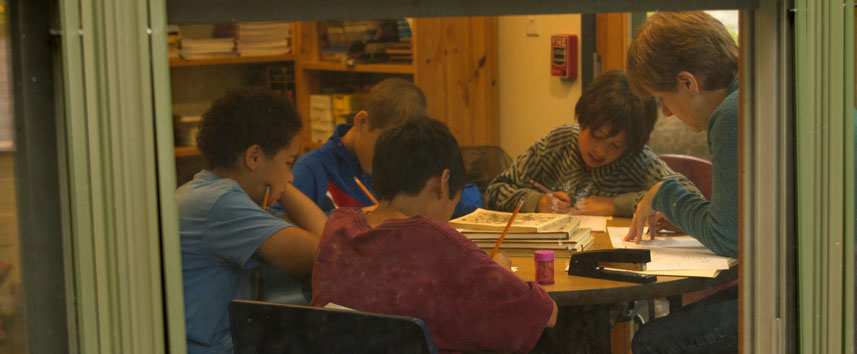
Structures for Learning
Progressive education is frequently misunderstood as being “unstructured.” This confusion may be based on the relative lack, in progressive schools, of traditional “visible” features such as uniforms, desks in rows, grades and test scores, and silent children listening to a teacher lecture. In our view, these structures do not work well to promote the kinds of learning experiences that we feel are critical for children. At Miquon we believe that school success for every child comes from a carefully-contrived balance of structure with latitude.
Our overlying structure is provided through clearly articulated goals and expectations for different age groups, a shape and schedule to the day that is appropriate for each age group, close observation of individual needs, and intense teacher involvement in each child’s progress.
The latitude necessary for children to develop independence, self-motivation, and a passion for learning comes from intentionally providing them the space to experiment, to take a different path, to make choices, to take risks. It is preserved by teachers who observe and assess carefully, who may have different expectations for each child, and who not only permit but actively encourage a variety of approaches to each task.
At Miquon, we integrate very intentional structure into each child’s school experience:
An excellent student-teacher ratio
For reasons of social diversity, we prefer our groups (classes) to be around 20-24 in size. So that we can know our students intimately, each group has two full time teachers: a lead teacher and an assistant teacher.
A full spectrum of special subjects
Every group in the school has scheduled time with each of the five “specialist” teachers once or twice a week. The Music, Art, Science, Library, and Physical Education teachers provide a longitudinal perspective on each child that complements the close current knowledge of the group teachers.
Small group instruction
Usually, students meet with the specialist teachers in half groups. This allows the other half group to work individually or in very small instructional groups back in the home classroom.
Schedule
The day is blocked out into periods which assign the specialist times to each group. Younger groups have daily routines which are highly predictable and change only rarely. Older students, who are mature enough to be stimulated by the unexpected, usually delight in the spontaneous schedule changes that can readily occur when teachers decide to try something different.
Scope and sequence rubrics
This refers to the description, for each developmental level, of the progressive skills and concepts that are appropriate in a domain (such as math, or language arts). Teachers use this framework to set individual and group learning goals, but each may choose the particular topics, materials, and underlying themes through which they will present the specific concepts.
Ongoing assessment of student learning
We believe that the primary purpose of assessment is for the teacher to plan instruction, not to make comparisons between children. Therefore, we have no letter grades or class ranks, preferring to describe children as learners broadly and deeply in narrative form. Our children are individually assessed against national norms in reading, writing and math. The older students (4th grade and up) take standardized achievement tests every year.
Learning support
A team of support staff is available to assist any teacher who feels the need for consultation on a particular child’s progress. Times are set aside for regular discussions between classroom teachers, the language arts coordinator, the school psychologist, and the principal.